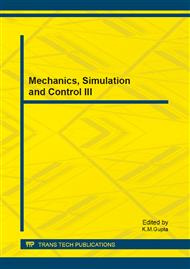p.259
p.264
p.270
p.275
p.280
p.286
p.292
p.297
p.302
High Accuracy DEM Reconstruction Using SAR Clinometry and Interferometry Method
Abstract:
In this paper, a novel method is proposed by combining of radar clinometry and interferometry to improve the accuracy of digital elevation model (DEM) reconstruction. In synthetic aperture radar (SAR) signal processing, the interferometry method uses a couple of high-coherence SAR complex images and the clinometry method uses only one. On one hand, interferometry-derived DEM is much more accurate in regions of higher coherence than the clinometry one. However, in regions of lower coherence, some pronounced errors are produced with the interferometry method due to phase filtering and unwrapping problems. On the other hand, the clinometry method can produce a more robust DEM result by using the intensity of SAR image. Therefore the clinometry-and interferometry-derived DEM is fused by introducing a user-defined weighting factor, where in regions of higher coherence, the DEM results with the interferometry method are remained, and in regions of lower coherence, the interferometry-derived DEM is updated with the clinometry-derived one. Finally, the experimental results with Envisat data show the effectiveness of our approach.
Info:
Periodical:
Pages:
280-285
Citation:
Online since:
August 2013
Authors:
Price:
Сopyright:
© 2013 Trans Tech Publications Ltd. All Rights Reserved
Share:
Citation:


